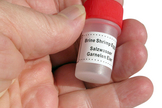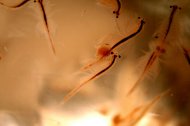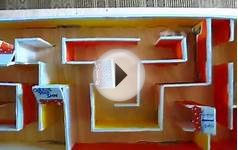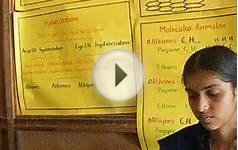Mary Bagley, LiveScience Contributor | July 11, 2013 06:30pm ET
By high school, students should be familiar with scientific methods and processes and have a grasp of basic science principles. Your high school science teacher will assign science fair projects with the goal of helping you develop the ability to apply knowledge of science processes to learn something new.
Doing a science fair project is like doing a real world job assignment. You will be using skills you have learned throughout your education to research a question or problem, develop possible solutions, design a test for your chosen solution and present your findings.
Project components
At the high school level, a science fair project typically must have the following components. However, you must carefully read the particular guidelines provided by your teacher or the science fair rules and follow them exactly.
Proposal: This is a very brief description of the experiment you plan to do. This short paragraph will help you get a very clear idea of what you are going to do. You may be required to turn this in to your teacher very early, before you do any other work. It allows the teacher to check that your planned experiment is safe, follows legal and ethical rules, and is not a simple demonstration.
 Title: This is the name of your experiment. It is a good idea to use your science question as the title for your project.
Title: This is the name of your experiment. It is a good idea to use your science question as the title for your project.
Purpose: This is a statement describing what it is you want to find out by doing the experiment. It describes why you are interested in the topic that you chose and what you think you will learn. Students often include ideas about why the experiment is important and how the information you learn could benefit others.
Hypothesis: This is a prediction of what you think will happen in the experiment. This prediction must be based on some research, prior knowledge or observations. It should be stated in an “If/Then” format.
 “If soil type affects erosion rates, then sandy soils will erode faster than clay soils.”
“If soil type affects erosion rates, then sandy soils will erode faster than clay soils.”
Materials list: All the equipment and resources needed to do the experiment.
Procedure: This is a step-by-step set of instructions for the experiment. It must be very detailed and include accurate measurements of materials needed for each step.
Results: This is where you document each phase of the experiment. It often includes experiment in different stages as well.
Research paper: This is usually a 2-3 page paper on a topic related to your experiment. You will include a history of similar experiments or inventions and their real-world applications. Define any specialized terms used in the experiment and show any mathematical formulas that you had to use.
Bibliography and References
Science fair project ideas
Find out if changes in acidity affect the survival rate of brine shrimp.
Credit: Michelle Jo/Creative Commons
Idea No. 1: How do changes in acidity affect the survival rates of an invertebrate population?
*Remember that it is against the rules in most science fairs to use vertebrate animals as subjects. Brine shrimp are not expensive and can be used as subjects for a variety of projects.*











